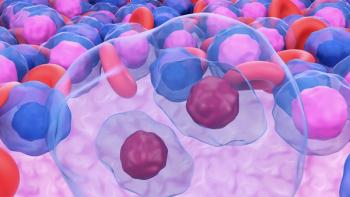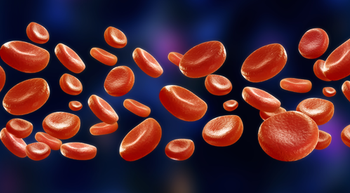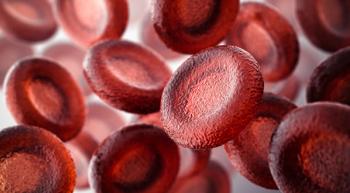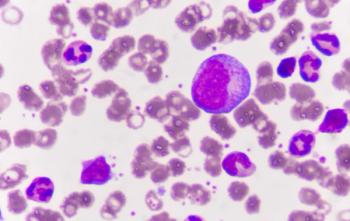
Higher Corticosteroid Peak Dose May Worsen Survival in Patients With Treatment-Related Adverse Events
Higher corticosteroid peak dose may worse progression-free and overall survival in several tumor types including melanoma, non-small cell lung cancer, and others.
Patients who received higher corticosteroid peak dose for treatment-related adverse events (trAEs) upon treatment with anti-PD-1 and anti-CTLA-4 therapy had worse survival across tumor sites, although this association was not observed with a cumulative dose, recent study findings demonstrated.
The results from a study published in the Journal of Clinical Oncology may suggest a reconsideration of the starting dose for corticosteroids.
“Current guidelines recommend a stepdown approach for corticosteroids, advising 1-2 mg/kg prednisone for many grade 3 or higher irAEs,” the study authors wrote. “These data argue for a reconsideration of irAE management approaches. Although prompt immunosuppression is needed to prevent chronicity and fatality in some cases, clinicians should consider starting with lower corticosteroid doses whenever possible.”
A post hoc analysis was performed using data from 6 phases II/III trials. The analysis included data from 834 patients treated with immunosuppression for trAEs. All patients received corticosteroids and 81 patients received second-line immunosuppressants.
Patients who received high corticosteroid peak dose typically had worse progression-free survival. In particular, the adjusted HR was 1.15 for 1 mg/kg vs 0.5 mg/kg of prednisone (95% CI, 1.02-1.29; 95% PI, 1.07-1.24); 1.43 for 2.0 mg/kg vs 0.5 mg/kg (95% CI, 1.05-1.96; 95% PI, 1.17-1.75); and 1.25 for 2.0 mg/kg vs 1.0 mg/kg (95% CI, 1.03-1.52; 95% PI, 1.10-1.41).
Similarly, OS rates were also impaired during higher corticosteroid peak doses of 1.0 vs 0.5 mg/kg, 2.0 vs 0.5 mg/kg, and 2.0 vs 1.0 mg/kg. In particular, adjusted HRs were 1.21 (95% CI, 1.06-1.39; 95% PI, 1.08-1.37); 1.66 (95% CI, 1.17-2.37; 95% PI, 1.23-2.24); and 1.37 (95% CI, 1.10-1.70; 95% PI, 1.14-1.64), respectively.
Researchers also noted that cumulative corticosteroid dose was not linked with survival. Regarding the use of second-line immunosuppression, the adjusted HR was 1.23 (95% CI, 0.90-1.68) for progression-free survival and 1.25 (95% CI, 0.88-1.77) for overall survival.
The analysis included 1959 patients (73% male; mean age, 62 years) who received at least 1 dose of anti-PD-1 plus anti-CTLA-4. Patients included in this analysis had different cancer types such as melanoma (n = 313), microsatellite instability high or mismatch repair deficient colorectal cancer (n = 119), advanced renal cell carcinoma (n = 547), advanced esophageal squamous cell carcinoma (n = 322), malignant pleural mesothelioma (n = 300), and metastatic non-small cell lung cancer (n = 358). Follow-up was conducted for a median of 24 months since treatment with anti-PD-1 and anti-CTLA-4 was initiated.
Most trAEs (77%) occurred within the first 4 months of treatment, and 43% of patients receiving anti-PD-1 plus anti-CTLA-4 therapy experienced trAEs requiring systemic immunosuppression. Most common types of trAE requiring immunosuppression were gastrointestinal (n = 217; 11%), endocrine (n = 161; 8%), hepatobiliary (n = 163; 8%), cutaneous (n = 126; 6%), and pulmonary events (n = 133; 6%). Two percent of patients (n = 16) died from their first trAE.
The primary outcomes of the trial were overall survival, as defined as the time from starting first immunosuppressant for trAE until death, and progression-free survival, as defined as the time from starting immunosuppression until investigator-reported progressive disease or death due to any cause.
Findings from the post hoc analysis may not fully reflect real-world practice due to differences in treatment algorithms, and between clinical practice and clinical trial settings. Despite these limitations, the study’s findings are consistent with real-world observations, suggesting their broader use of corticosteroids.
Reference
Verheijden RJ, de Groot JS, Fabriek BO, Hew MN, May AM, Suijkerbuijk KPM. Corticosteroids for Immune-Related Adverse Events and Checkpoint Inhibitor Efficacy: Analysis of Six Clinical Trials. J Clin Oncol. Published online August 7, 2024. doi:10.1200/JCO.24.00191
Newsletter
Knowledge is power. Don’t miss the most recent breakthroughs in cancer care.

















































































